Pearl of East: Your travel guide in Uzbekistan.
|
Main Menu
Tashkent
Samarkand
Bukhara
Khiva
Baysun
Nukus
Margilan
Ferghana
Nurata
Namangan
Kokand
Sarmysh Say
Termez
|
News / НовостиUzbekistan: Holy sites of Uzbekistan:Khorezm and Southern Karakalpakstan06/02/2017 13:34 Until the 8th century AD, people in Khorezm were fire worshipers (Zoroastrians). When the Arabs conquered the region, the Islam became state religion. In the 14th century, several famous Koran teachers came as missioners to Khorezm, from other Islamic countries. Until today, their burial sites are holy places visited by many worshipers. Non-Muslims are also welcome to visit these holy places. It is beneficial to come with a guide who can interpret the words of the resident Imam for you. The holy sites have a special atmosphere. Please dress decently and respect the silence and devotion of other worshipers. Voyangan Bobo and Sheikh Savroniy Bobo Mausoleum The Voyangan Bobo Complex is located 11km north-west of Shovot village, about 5km from the Turkmen border (GPS coordinates 41° 44' 10"North, 60° 10' 30"East).
It consists of two mausoleums (of Voyangan Bobo and Hazrati Eshon Bobo) surrounded by a huge cemetery.
In front of the mausoleum, you find a holy stone. People believe that, when children suffer from herpes, they can be cured by applying yogurt onto their affected lips, which has been in contact with the holy stone.From the mausoleum, you can overlook the entire cemetery including a small saline lake. On the other side of the road, there is the mausoleum of Sheikh Savroniy Bobo, an Islamic leader.
Yusuf Hamadoni Mausoleum The Yusuf Hamadoni complex is located in the Shovot area. The mausoleum of Yusuf and Sayid Hamadoni, originally built in the 12th century AD, was reconstructed in 1994. It is a famous local Muslim pilgrimage site. It is believed that Yusuf was holy and able to heal people with mental problems. Until today, mentally ill patients are brought here to be cured from their disease. They stay for 40 days in one of the guesthouses of the complex. The Khorezm Tourism Development Plan includes the renovation of the Yusuf Hamadoni Mausoleum. Apart from the improvement of the access road, the sanitation facilities are meant to be upgraded. To provide favorable conditions for local and foreign worshipers, shops, restaurant facilities, and artisan workshops are to be built on the site.
Jilovdor Bobo Mausoleum
Sheikh Mavlon Bobo Complex The complex is located in Qiyot village in Khiva district and consists of Sheikh Mavlon Bobo's mausoleum, a summer mosque, and a minaret. Sheikh Mavlon Bobo was an Islamic teacher in the 17th century AD. The complex was built by Muhammad Rakhim Khan II from 1889 to 1891, and became a famous pilgrimage site. The mausoleum of two famous Uzbek poets, Muhammad Rizo Agakhiy and Munis Khorezmiy built in 2004, is located a few hundred meters away on the cemetery.
Munis Khorezmiy was born in 1778 in Qiyot village, and died in 1829. He was a poet, historian, scientist, translator, calligrapher, famous teacher and a mirob (water manager). He got his education in one of the madrassas in Khiva and made his first poetry collection, named Devoni Munis, in 1804. Khorezmiy was asked by the khan to write a history book of the khanate. It is a very valuable source of the political history of the Khiva Khanate in the 19th century. The book includes descriptions of the relationships between the khanate and neighboring states. Another publication explains the agricultural system of the oasis. Muhammad Rizo Agakhiy, born in 1809 in Qiyot village, was a poet, historian, translator and worked as a mirob (water manager). He was fluent in Arabic, Persian, and Turkish. Agakhiy wrote six history books, a poetry collection and translated 20 books from Persian into Arabic. Muhammad Rakhim Khan II valued his advice and had his words engraved in stone plates placed in the hall, where he considered peoples' petitions. One of Agakhiy's famous works is his "Advice to a Patron" (qasidai nasixat), addressed to Feruz, in which he summarizes the character traits of a good ruler: just, kind, merciful, friendly, well-educated, a moral and spiritual role model. Further, he advised the khan to have a pure soul, keep away from any indolence, cruelty, greediness, debauchery, betray, and intrigue. Agakhiy died in 1874.
Sheikh Muhtor Valiy Mausoleum
In the 14th century, Sheikh Muhtor Valiy came to Khorezm to preach the Islam. He settled down in the Khiva area and resided in a mosque (Sheikh Muhtor Ota Mosque, now Bir Gumbaz Restaurant). There are many stories about the supernatural powers of Sheikh Muhtor Valiy. He was known to be kind to all creatures. Wild animals have been reported to come to the mausoleum. The site has a very special flair. The local Imam will offer to pray with you and provide information about Sheikh Muhtor's life.
Sultan Uvays Bobo Complex The mausoleum of Sultan Uvays Bobo is one of the most famous holy sites in Central Asia even though, is not certain that Sultan Uvays is buried here, in Yemen or in Syria. Sultan Uvays, a famous Islamic preacher, came from Yemen, where he was a camel shepherd who got spiritually enlightened. He was a contemporary of Prophet Muhammad and is regarded as the founder of the Islamic Sufi movement. He made a pilgrimage to Medina once, but did not have the opportunity to meet Prophet Muhammad in person. However, years later, Prophet Muhammad sent two of his followers to Yemen, to give his cloak to Sultan Uvays. Sultan Uvays died in AD 656.
The first mausoleum erected on this site dates back to the 9th century. The present building, constructed in the 19th century, is surrounded by a huge mazar, a cemetery. During Soviet times, it had been closed by the authorities. Today, the site is open again and the courtyard at the centre of the mausoleum, invites worshipers to sit and eat after visiting the holy place. On top of a nearby hill, marks in a bolder are said to be the knee print of the saint. Pilgrims bring offerings to this site hoping for their wishes to be fulfilled. Particularly on Fridays, the site is well visited.
|
Calendar
Weather
Useful Links
Searching for Airways and Hotels
|

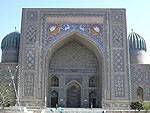
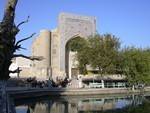
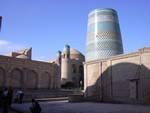
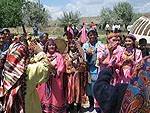
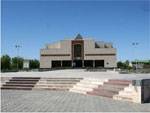
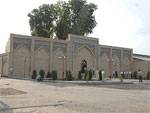
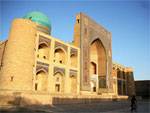
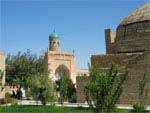
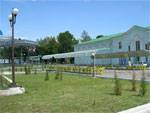


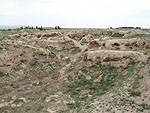





 Before going to the Yusuf Hamadoni complex, worshipers usually visit Jilovdor Bobo Mausoleum, located across the road from Yusuf Hamadoni complex, where the four loyal servants of the saint are buried. All four stayed single and dedicated their entire life serving their master. While Jilovdor was the charioteer of Yusuf Hamadoni, Dasturhonchi worked as a housekeeper, Chiroqchi was in charge of the light and Ochuvchi was said to be able to change people's fate.
Before going to the Yusuf Hamadoni complex, worshipers usually visit Jilovdor Bobo Mausoleum, located across the road from Yusuf Hamadoni complex, where the four loyal servants of the saint are buried. All four stayed single and dedicated their entire life serving their master. While Jilovdor was the charioteer of Yusuf Hamadoni, Dasturhonchi worked as a housekeeper, Chiroqchi was in charge of the light and Ochuvchi was said to be able to change people's fate.


 The mosque, mausoleum, and cemetery complex is located 4.5km south-west of Yangiariq village along the road to Oqmasjid. Sheikh Muhtor's grave is a famous pilgrimage site. The mosque includes the only preserved Sufi meditation chamber (xonaqoh) of Khorezm. Following the Sufi believes, the Mausoleum was a plain, whitewashed building. Tiles were added during renovation works later.
The mosque, mausoleum, and cemetery complex is located 4.5km south-west of Yangiariq village along the road to Oqmasjid. Sheikh Muhtor's grave is a famous pilgrimage site. The mosque includes the only preserved Sufi meditation chamber (xonaqoh) of Khorezm. Following the Sufi believes, the Mausoleum was a plain, whitewashed building. Tiles were added during renovation works later. On a nearby mound, where now the Oq Sheikh Bobo watch tower is located, he taught his followers. He was buried in the Yangiariq area. His mausoleum was rebuilt by the vizier of Khiva, Yoqub Mextar, in the 19th century.
On a nearby mound, where now the Oq Sheikh Bobo watch tower is located, he taught his followers. He was buried in the Yangiariq area. His mausoleum was rebuilt by the vizier of Khiva, Yoqub Mextar, in the 19th century.
 From Beruniy follow the Nukus road for 35km. The turn-off to the site is well signposted. The mausoleum is located at the southern foothills of the Uvays Bobo Range, 3km from the main road. For worshipers who visit the site, there is a parking lot, framed by many stalls with souvenirs and religious objects, as well as slaughtering and cooking facilities for the pilgrims.
From Beruniy follow the Nukus road for 35km. The turn-off to the site is well signposted. The mausoleum is located at the southern foothills of the Uvays Bobo Range, 3km from the main road. For worshipers who visit the site, there is a parking lot, framed by many stalls with souvenirs and religious objects, as well as slaughtering and cooking facilities for the pilgrims.
